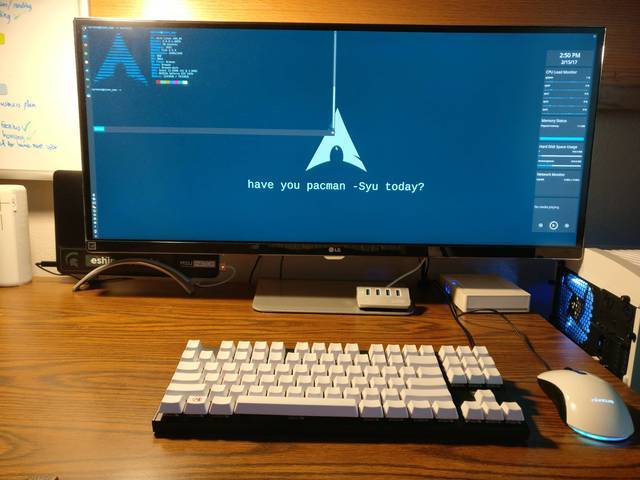
- ARCH LINUX MACBOOK PRO HOW TO
- ARCH LINUX MACBOOK PRO INSTALL
- ARCH LINUX MACBOOK PRO DRIVERS
- ARCH LINUX MACBOOK PRO UPDATE
- ARCH LINUX MACBOOK PRO WINDOWS 10
# I *think* you might not even need the following line, rEFInd can work without GRUB Mount -t efivarfs efivarfs /sys/firmware/efi/efivars

Vi /etc/nf # enter the following two lines: # KEYMAP=de-latin1 # FONT=Lat2-Terminus16 Vi /etc/locale.gen # uncomment de and en_US, both UTF-8Įcho LANG =en_US.UTF-8 > /etc/nf Ln -s /usr/share/zoneinfo/Europe/Berlin /etc/localtime (leave the EFI partition intact!) Then create your Arch partition(s), set it to type “Linux”. Delete the OS X recovery partition, if you like. I’d do that from within Arch later.īoot into Arch (USB stick), run cgdisk.
ARCH LINUX MACBOOK PRO INSTALL
You can find the full instructions here, but in summary, you’ll need to download their live image (which is slightly modified from the ARM64 Ubuntu build for the Raspberry Pi), copy the image to an external USB drive (which needs to be at least 16GB in capacity), connect your USB drive to the Mac Mini’s USB-C port, boot into the recovery OS, install the custom kernel (Corellium has provided a setup script), and then log in using the default credentials.Īs you can see, the installation process is not very user-friendly, so it’s not recommended for beginners to muck around with Linux on their Mac Mini.
ARCH LINUX MACBOOK PRO HOW TO
If you’re interested in trying out Linux on your own M1 Mac Mini, Corellium has shared instructions on how to boot Ubuntu. With a bit of work, the Corellium team managed to add support for enough hardware interfaces to boot Ubuntu Linux on the M1 Mac Mini. Without getting into the nitty-gritty details - Corellium’s blog post does a great job at that - Apple Silicon’s firmware interfaces and boot process are very different compared to other 64-bit ARM SoCs.

Fortunately, Apple officially allows booting custom kernels on Apple Silicon Macs, so there’s no need to leverage an exploit to boot an unsigned kernel.
ARCH LINUX MACBOOK PRO DRIVERS
The company leveraged its experience developing the Sandcastle project - which enabled booting Android on older iPhones susceptible to the checkm8 exploit - to write Linux drivers for the new Apple SoCs. In a blog post, Corellium lays out how they ported Linux to the new Macs. We will push changes to our GitHub and a tutorial later today.
ARCH LINUX MACBOOK PRO UPDATE
Update includes support for USB, I2C, DART. Booting from USB a full Ubuntu desktop (rpi). Linux is now completely usable on the Mac mini M1. The team has managed to port Linux and make it “completely usable” on the M1 Mac Mini.

ARCH LINUX MACBOOK PRO WINDOWS 10
Early last month, a few developers booted Windows 10 and Fedora Linux on an M1 Mac via virtualization, but the biggest breakthrough in alternative OS development for M1 Macs has come from the team at Corellium, a firm that specializes in ARM device virtualization. Ever since Apple launched its new Macs with the company’s new high-performance ARM chips, third-party software developers have been hard at work getting alternative operating systems up and running on the new hardware.


 0 kommentar(er)
0 kommentar(er)
